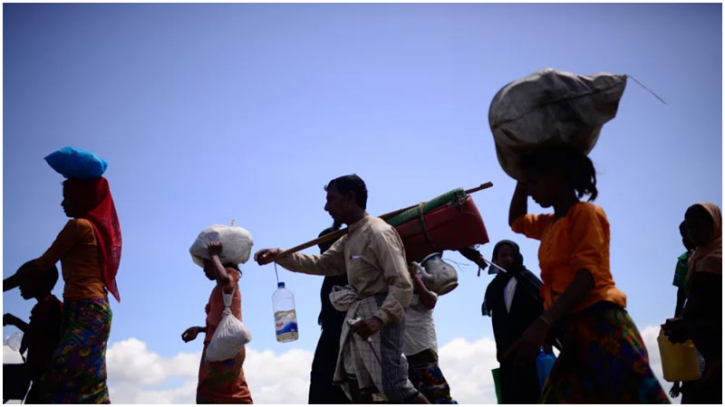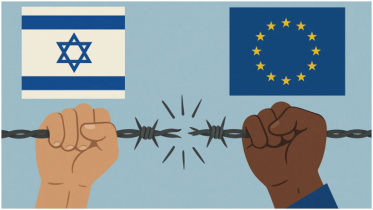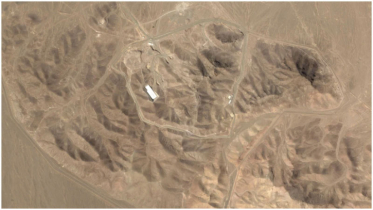Humanitarian corridor and the principle of safe passage

A humanitarian corridor is designated as a pathway to the persecuted and affected community in conflict zones during humanitarian crises. It is generally used to transport aid and other necessary support to a blocked region. In the case of Myanmar, the junta government has blocked communications with the Arakan Army-occupied Rakhine State and prohibited the transportation of aid. As a result, any international aid or even United Nations (UN) officials have been unable to reach the region to support the remaining 0.6 million Rohingya.
Considering the complicated case of the Rohingya crisis, the UN has requested Bangladesh to approve a humanitarian corridor to facilitate the dignified return and transport humanitarian aid to the ailing Rohingya. From a legal point of view, the humanitarian corridor has emerged from the principle of safe passage of international humanitarian and refugee law -- the principle ensures the protected movement of civilians, aid workers, and accession of humanitarian assistance in the conflict zones or borders.
Practically, the principle of safe passage can be applied in three different forms:
a) Humanitarian corridors;
b) evacuation and resettlement routes (clearing civilians from conflict zones); and
c) safe zones (creating safe havens for the refugees through the passage).
It is worth mentioning that humanitarian corridors have not emerged out of the blue, it is deep rooted in the practices of international humanitarian and human rights law. Apart from the principle of safe passage, the principle of responsibility to protect (R2P) and the principle of distinction also advocate for humanitarian corridors.
R2P is invoked by the international community, when the government of a state is unable to protect or waive the means of protection for a certain community. Whereas the principle of distinction advises to distinguish between civilians and combatants to ensure protection of the latter by the international community. This principle has its foundation laid in the article 48 of the Additional Protocol I of the Geneva Conventions.
The principle of non-refoulement also supports propositions of humanitarian corridors to discourage forced return of the refugees. To assert, humanitarian corridors can also be considered as a principle of customary international law by assessing its roots in international human rights, and refugee and humanitarian law. So, it is legitimate, permissible, and practicable to ask for humanitarian corridors.
Many of the international and regional courts’ decisions have been given in favour of this. The case of Gambia v Myanmar has granted provisional measures which require the need of such a corridor in absence of any communication to ensure the dignified, safe, and voluntary return of Rohingya. The ICJ Advisory Opinion on Constructing the Wall in 2004 by Israel in occupied Palestine also stressed on ensuring access to humanitarian assistance through freedom of movement.
The above-stated cases suggest that Bangladesh comes under a soft obligation of international law to provide a humanitarian corridor under three reasonable grounds:
- Bangladesh is the geographic dead end and only recipient state in the region;
- The country is an avid follower of international law;
- It needs international support to solve the crisis.
Bangladesh may still cite the grounds of threat to sovereignty or national security, but it will not suffice to avoid the request of the UN. It may also emphasize the constitutional vacuum of parliament following article 145 of the Constitution that directs for ratification of agreements by parliament and approval of the president to comply with international arrangements.
Bangladesh needs to find a solution, more so if it becomes bound to allow the humanitarian corridor
But the same Constitution encourages compliance with international law under article 25 as a fundamental principle of state policy and advocates for the right to life of persons.
Bangladesh needs to find a solution, more so if it becomes bound to allow the humanitarian corridor. Such corridors can be of three kinds:
a) Internationally regulated corridors;
b) conditional corridors; and
c) floating transit zones.
Internationally regulated corridors are initiated under the direct supervision of the UN, which is currently offered to Bangladesh. Conditional corridors are given after reaching an international agreement with the host state to resettle the refugees in third countries with a time-bound status. Lastly, the floating transit zones consist of neutral passages for the affected people of conflict zones.
Taking note of the scenario, Bangladesh may solicit for the option of a conditional corridor, if it has to provide a corridor following international pursuance. While allowing such a corridor, Bangladesh should also be concerned about the protection of the region from arms trafficking, drug trafficking, and human trafficking. Possibilities of the military junta’s further oppression towards the Rohingya in Myanmar and Arakan Army’s infiltration within the territory of Bangladesh will remain a major concern for Bangladesh.
Also, the corridor should not be used as a tool of geo-political manipulation, intelligence agencies’ movement zone, or the further displacement or unnecessary delay in repatriation. Only if these conditions are comprehensively accepted by the UN, can Bangladesh give the corridor conditionally.
Lastly, the corridor will need to be created by upholding the concept of burden sharing, where Bangladesh shall not be left alone with the responsibility. Moreover, Bangladesh as a state may take this opportunity to repatriate the Rohingya aligning with the UN's interest of ensuring dignified return and give passage for humanitarian assistance for the Rohingya in Rakhine.
Sakhawat Sajjat Sejan is Assistant Professor, Department of Law, European University of Bangladesh.
Source: Dhakatribune.
.png)




